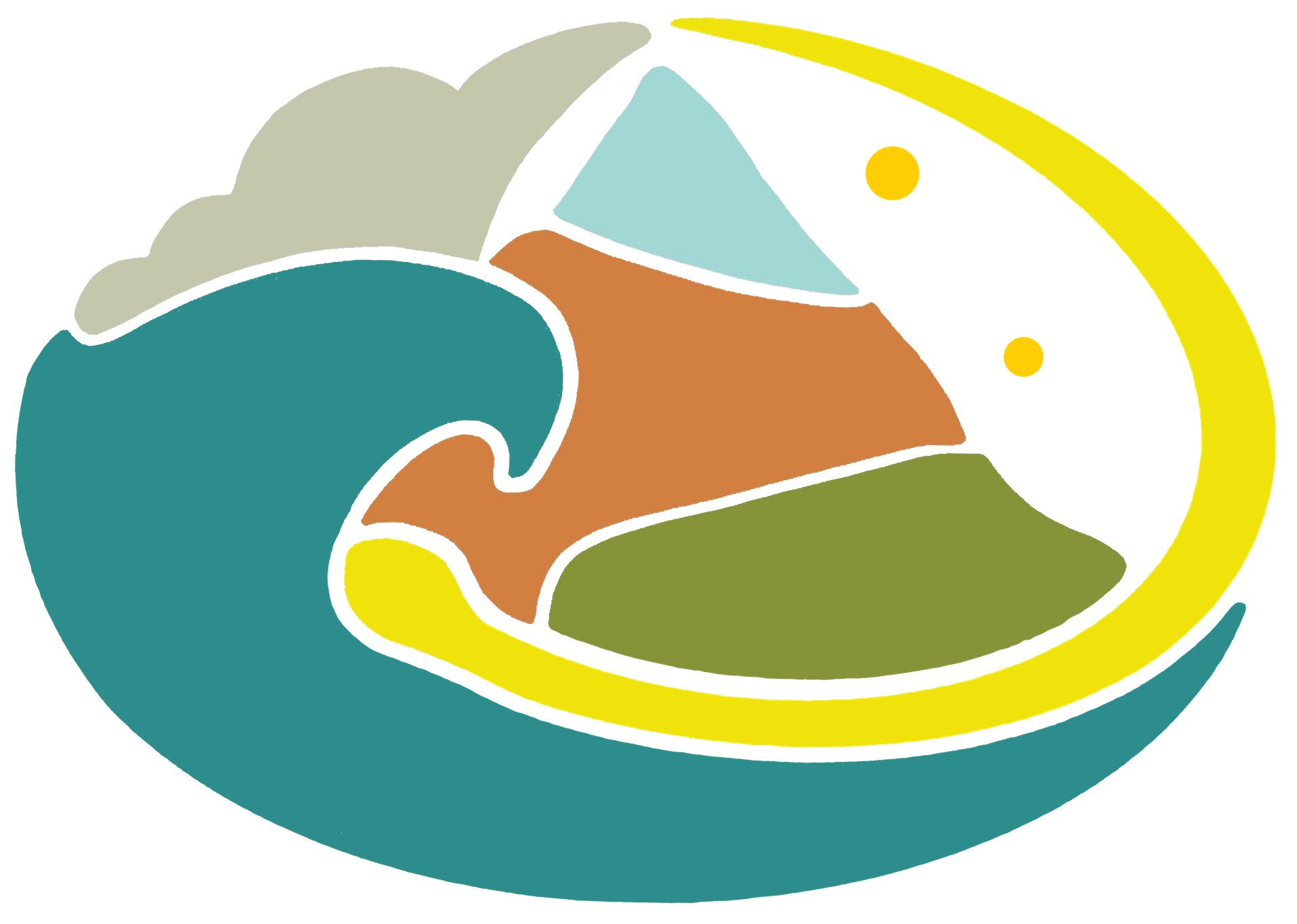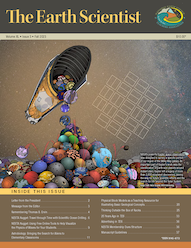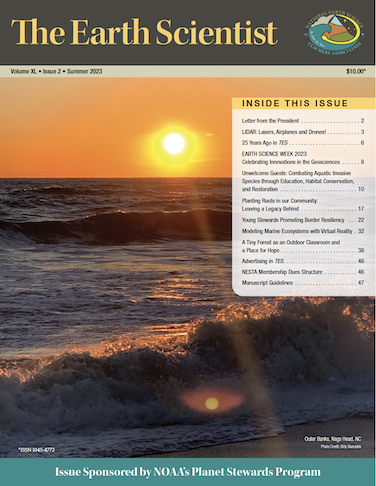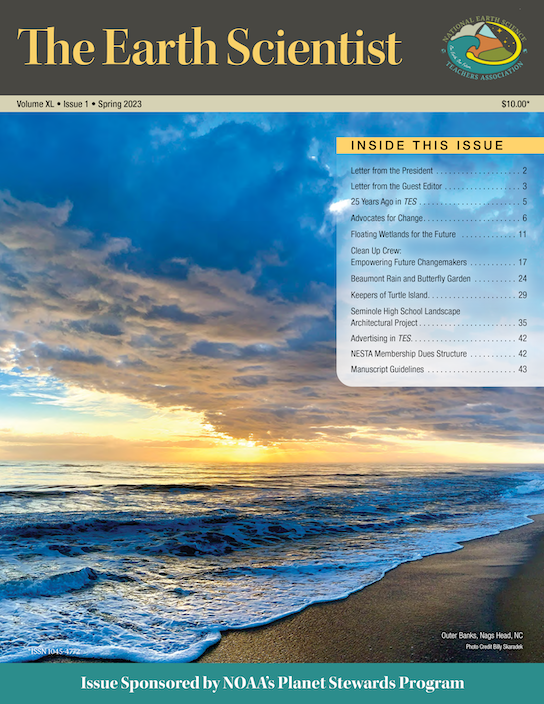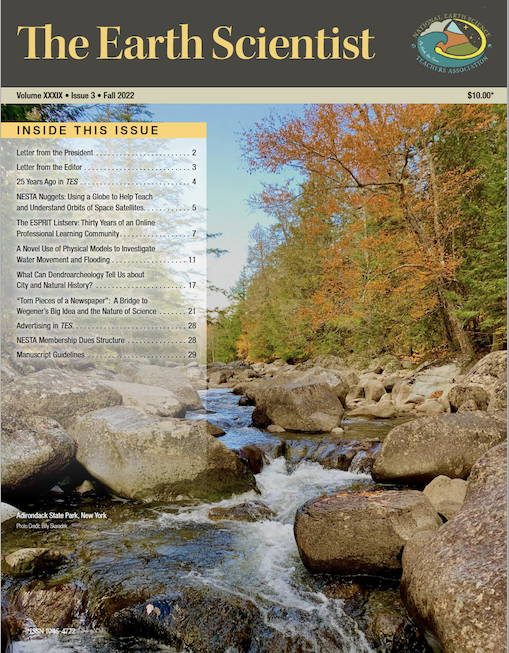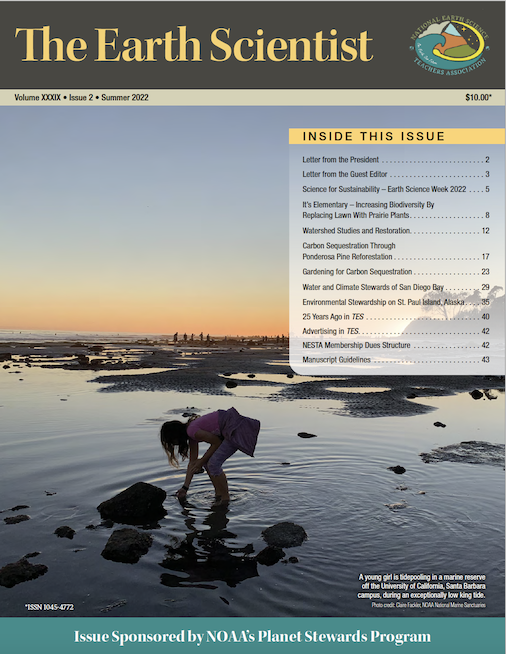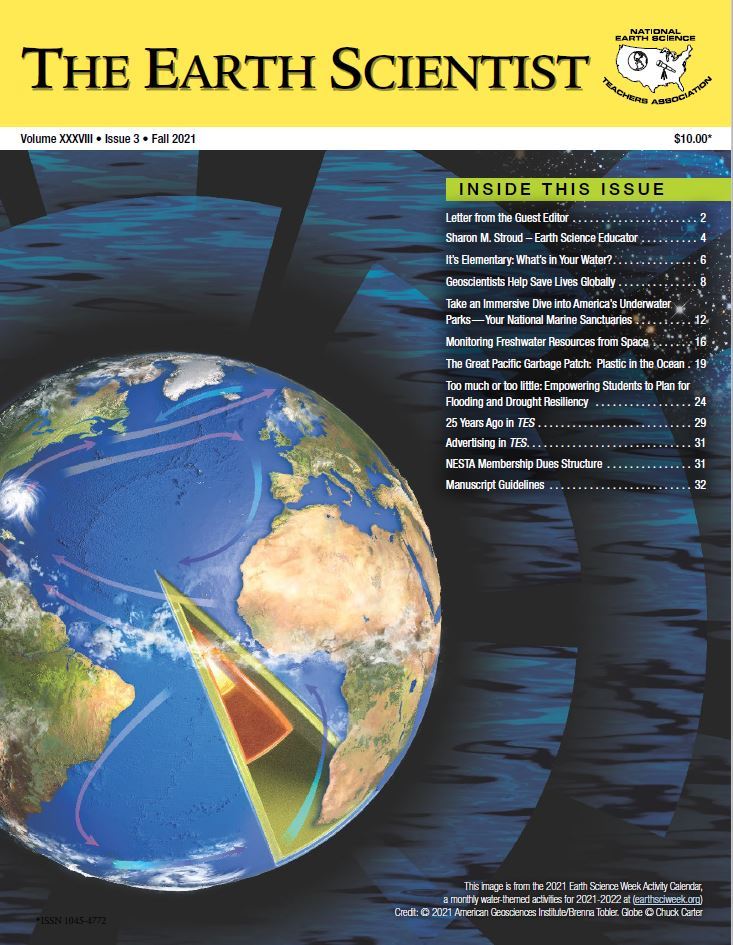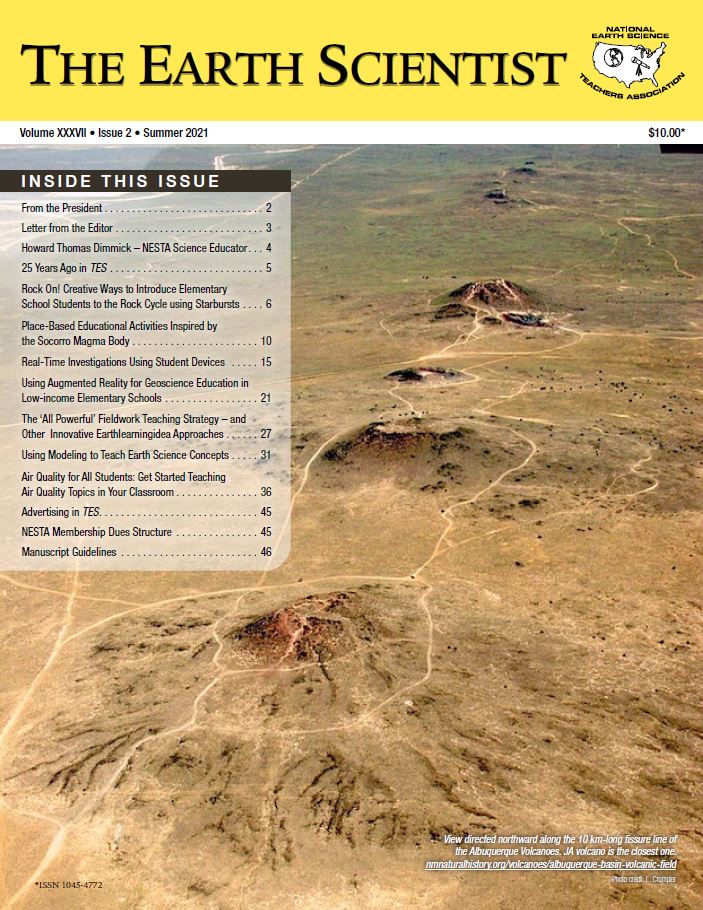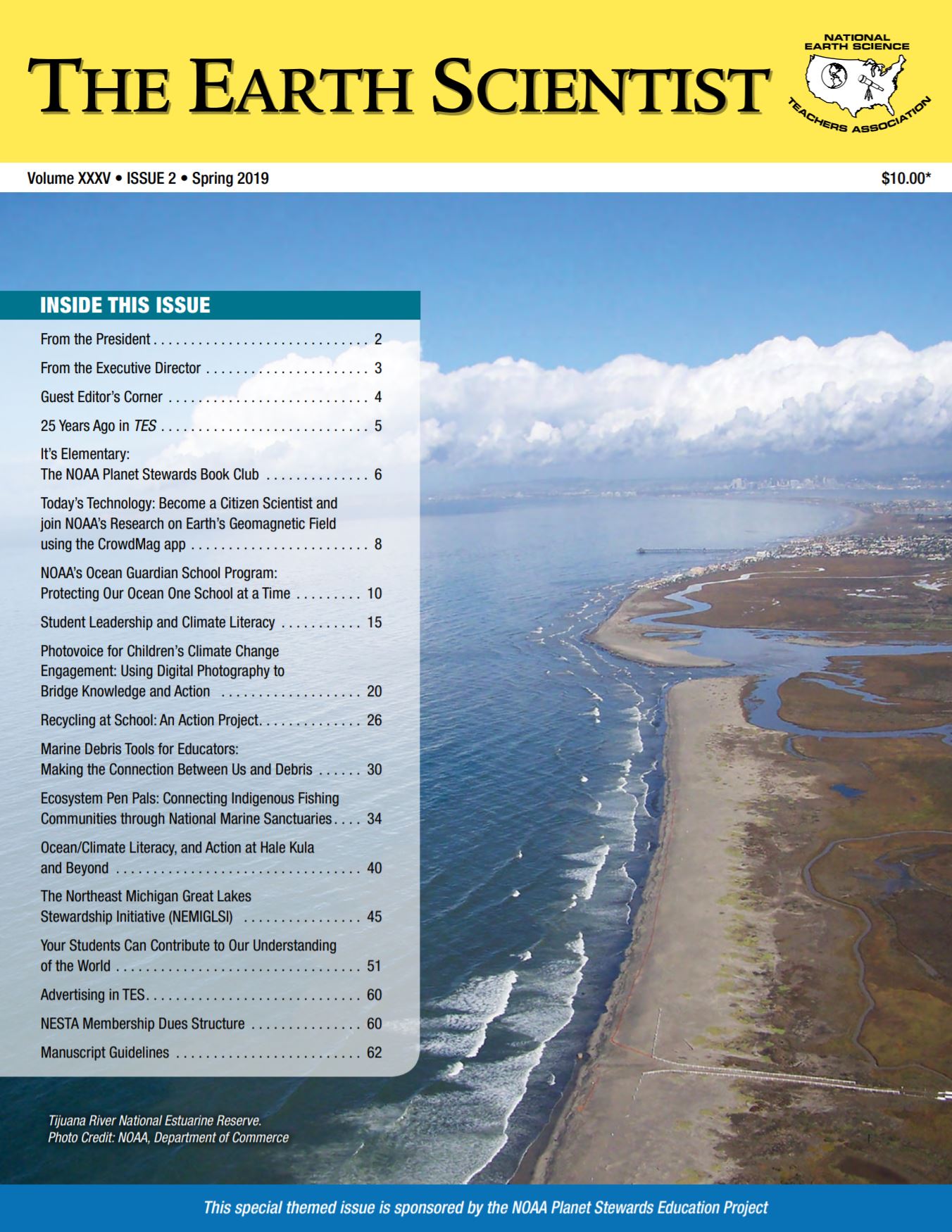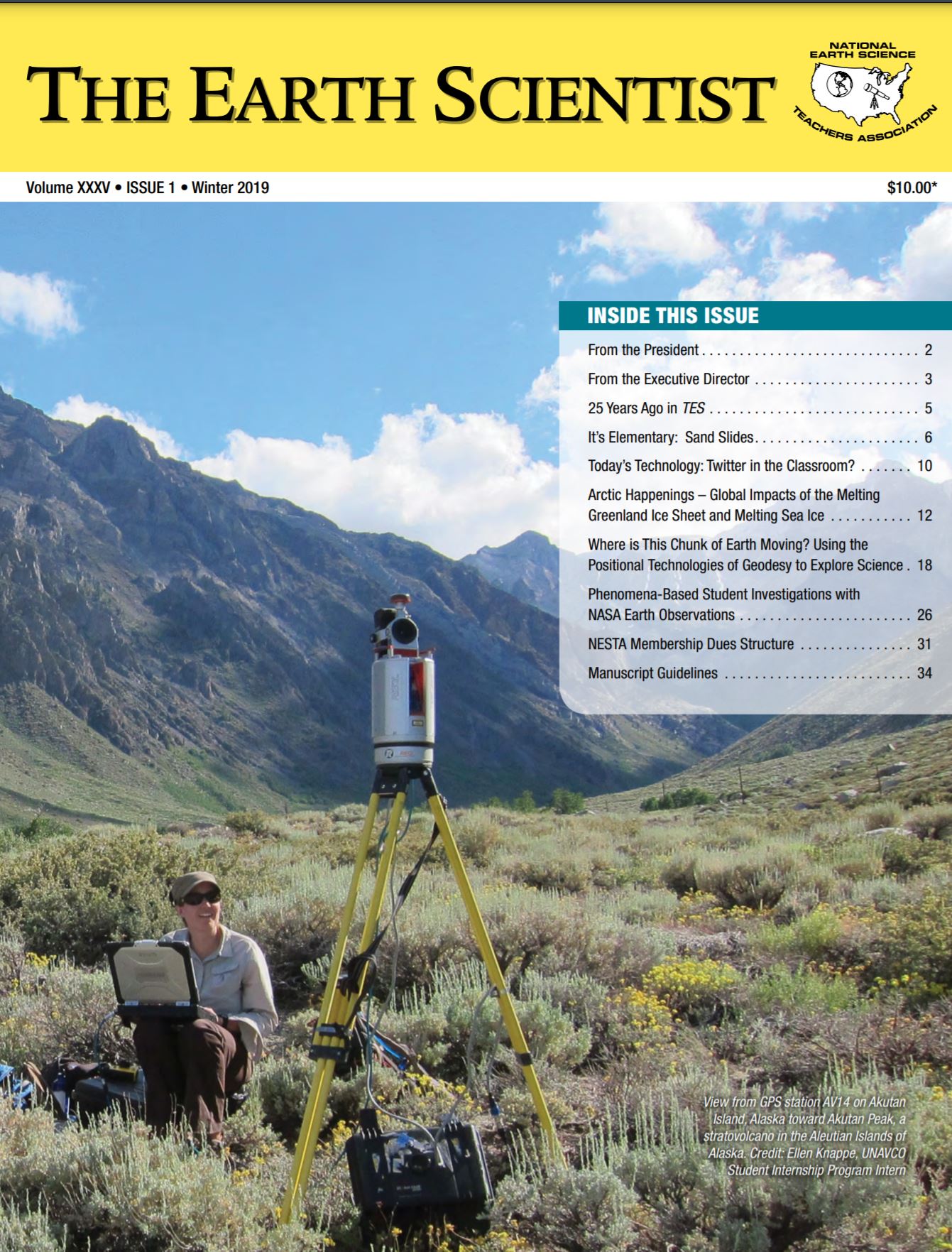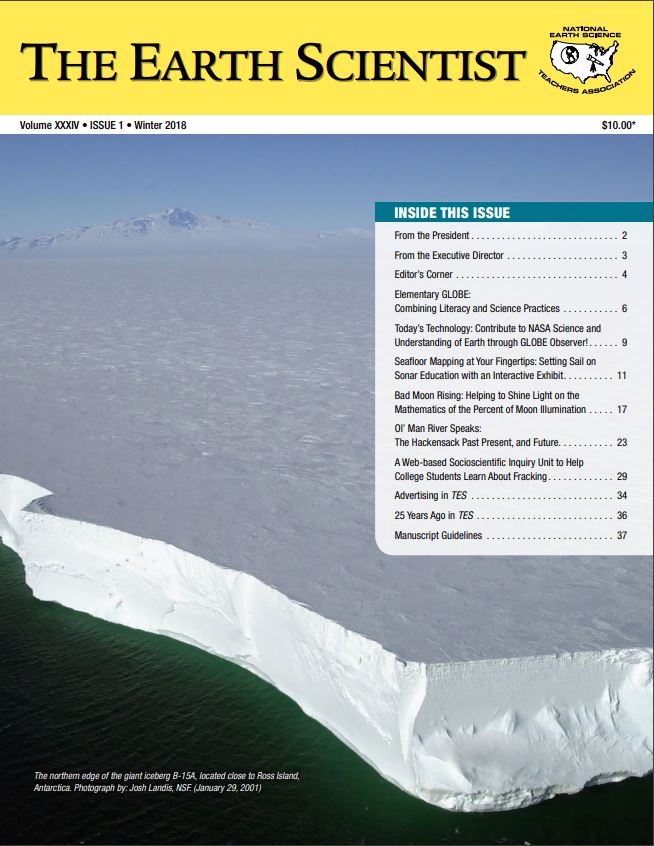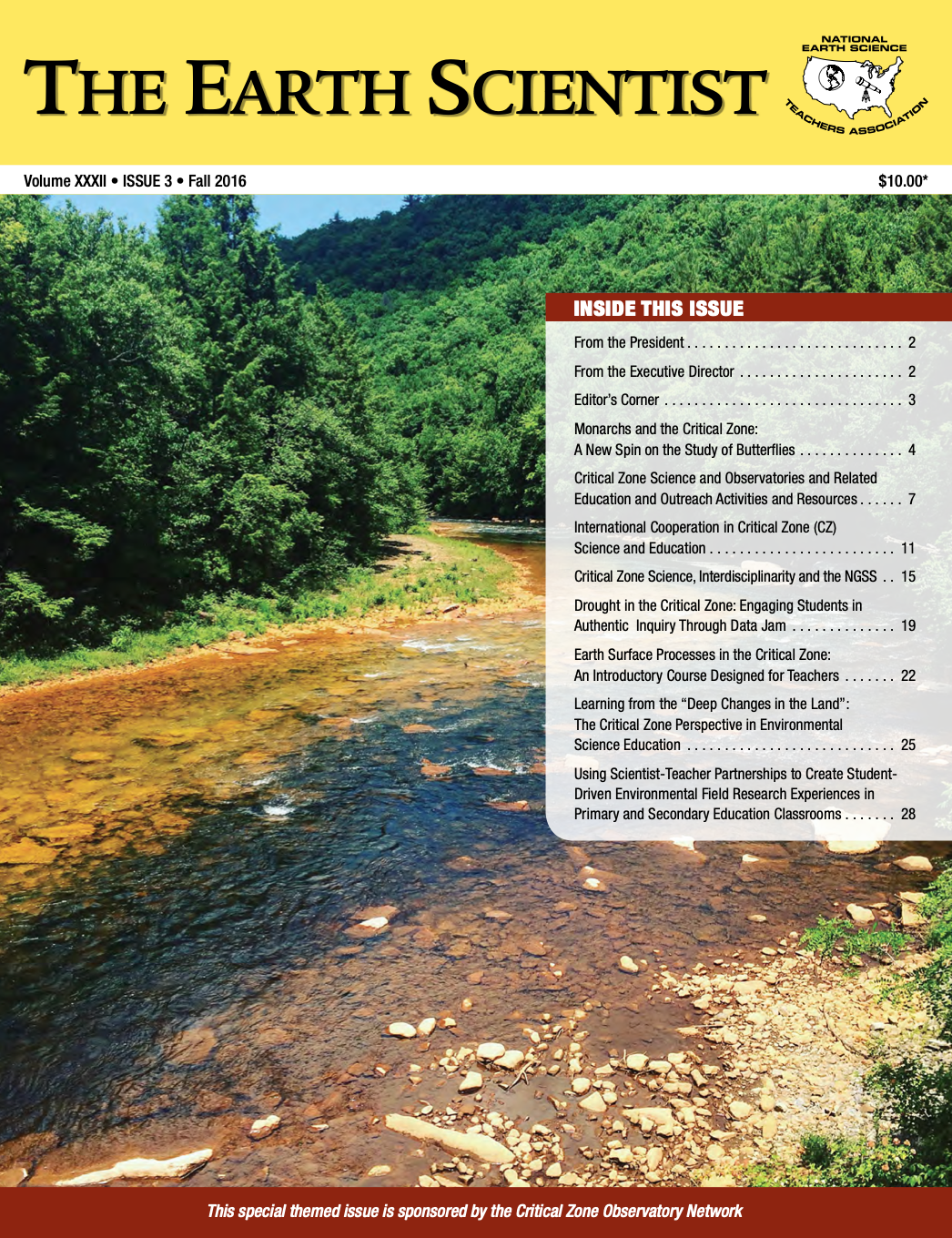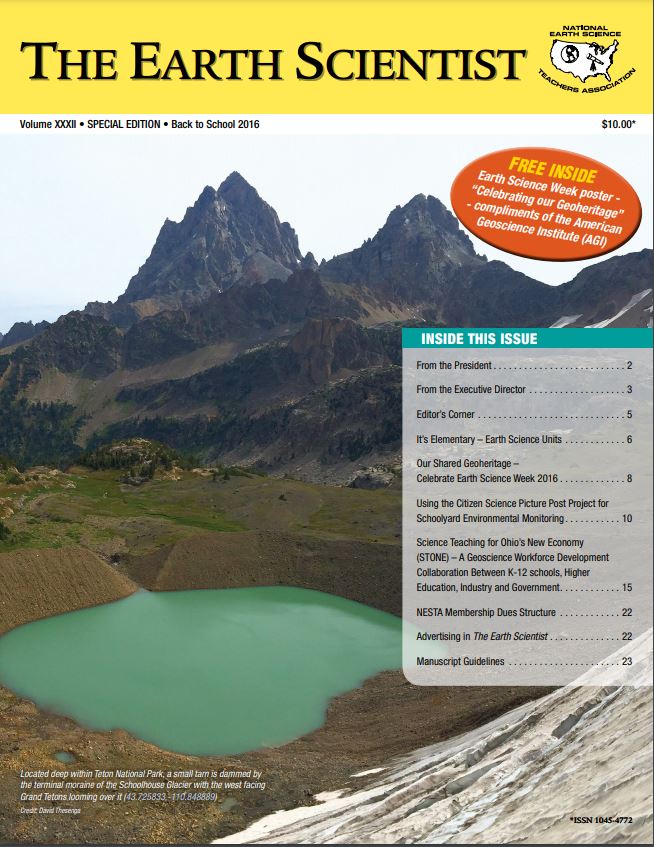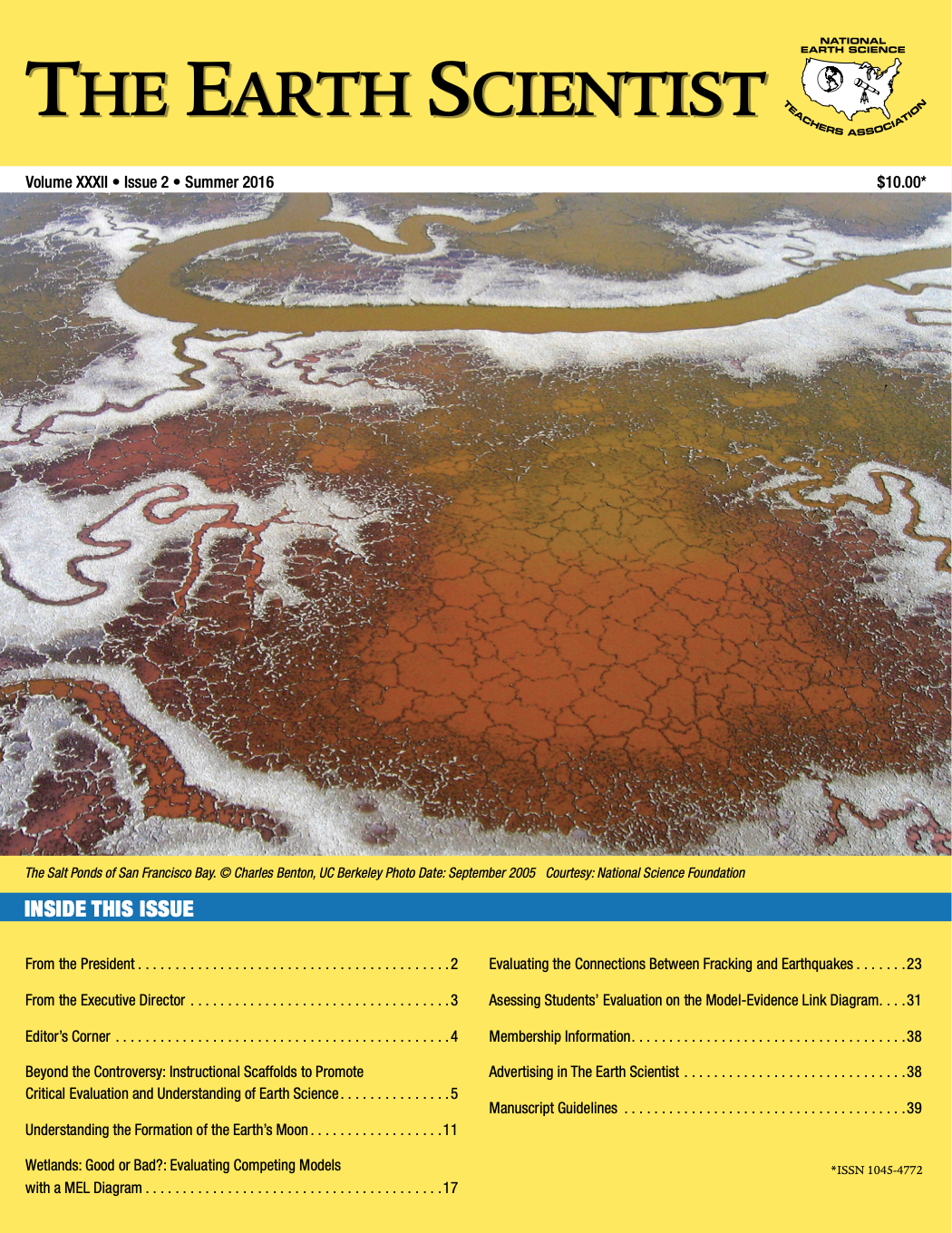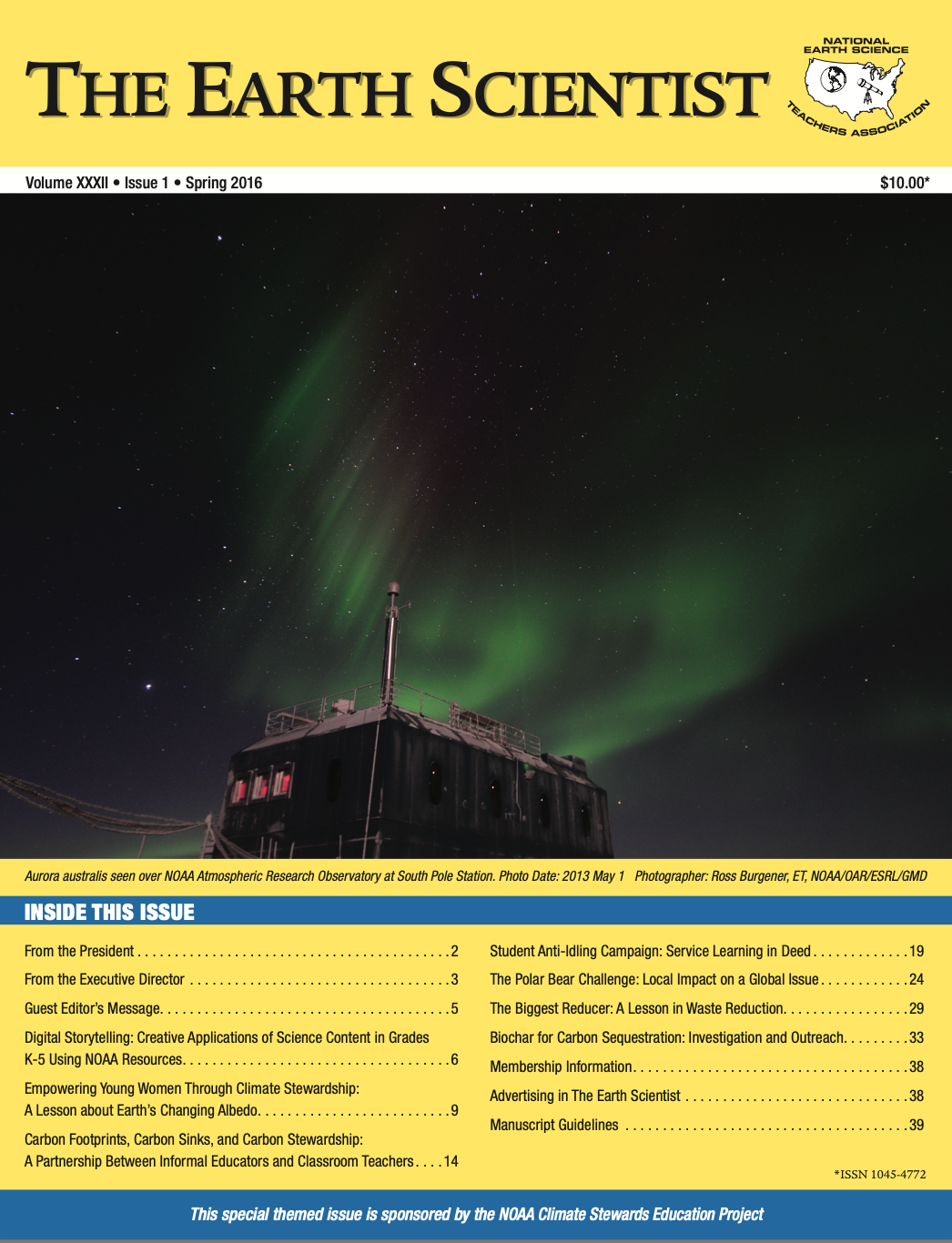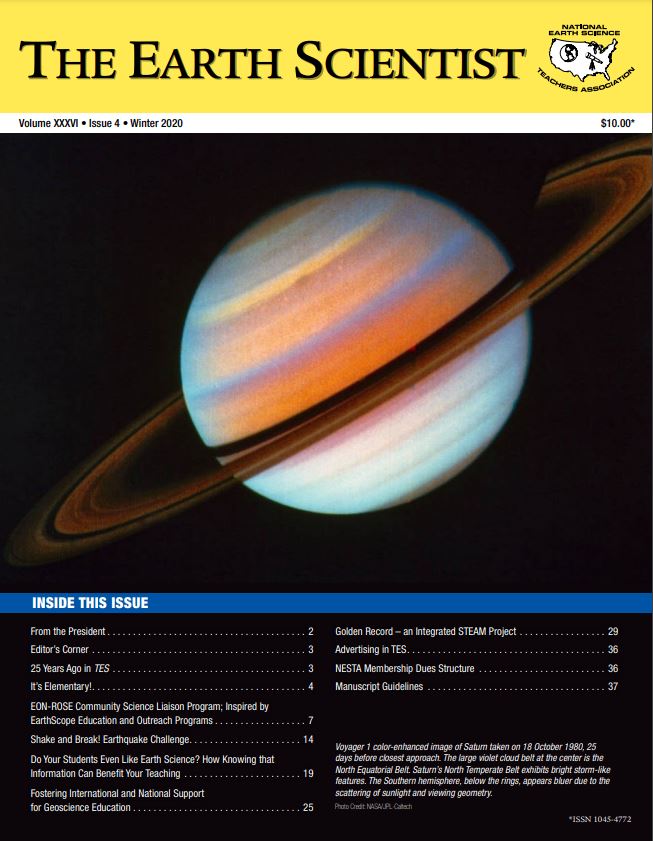 |
Winter 2020
- It’s Elementary! by Peg Steffen
- EON-ROSE Community Science Liaison Program; Inspired by EarthScope Education and Outreach Programs by Katherine J.E. Boggs, Kevin O’Connor, Robert (Bob) Sharp, Jonathan M. Withey, Marina C. Clark, David W. Eaton, Jason C. Droboth, Michael Craymer, Annika Trimble, Jeffrey T. Freymueller, Nathanial Scherger, Diana Kurila
- Shake and Break! Earthquake Challenge by Jayma Koval, Marion Usselman, Mike Ryan
- Do Your Students Even Like Earth Science? How Knowing that Information Can Benefit Your Teaching by James T. McDonald
- Fostering International and National Support for Geoscience Education by Dr. Michael J. Passow
- Golden Record – an Integrated STEAM Project by David Rosengrant
|
 |
Fall 2020  
- Earth Materials in the Spotlight by Geoff Camphire
- The Origins build-a-MEL: Introducing a Scaffold to Explore the Origins of the Universe by Janelle Bailey, Timothy Klavon, and Archana Dobaria
- Climate Changes of the Past: Engaging in Evidence-Based Argumentation by Donna Governor, Kristina Strickland, and Janelle Bailey
- Freshwater Resources: The Challenges of Quantity and Quality by Missy Holzer, Christopher Roemmele, and Janelle Bailey
- Extreme Weather Events and the Climate Crisis: What is the Connection? by Doug Lombardi, Büsra Uslu, and Janelle Bailey
- Assessing and Applying Students’ Understanding of the Scientific Practices and Crosscutting Concepts by Christopher Roemmele, Missy Holzer, and Janelle Bailey
- Teaching Earth and Environmental Science using Model-Evidence Link Diagrams by Erin Colfax, Ananya Matewos, and Janelle Bailey
|
 |
Spring 2020
- It’s Elementary: Zika Zine: A Resource Promoting the Integration of STEAM and Literacy in the Classroom by Rusty Low, Ph.D.,
- Today’s Technology: Reach for the Stars: Elementary School Students make History in Contacting the International Space Station by Rita Barakat and Dieuwertje Kast
- Earth Science All Around: Using Immersive Virtual Field Trips with Place‑Based Instruction in Earth and Space Science Education by Ed Robeck, Aida Awad, Steve Semken, Cheryl Manning, Melinda Daniels, Adam Blankenbicker
- GLOBE Weather: A New Curriculum Unit for Middle School Uniting the GLOBE Program with Classroom Instruction to Meet Next Generation Science Standards by Lisa S. Gardiner, John Ristvey, Becca Hatheway, Melissa Rummel, Emily Snode-Brenneman, and Renee Curry Minaya
- Soil: More than the Dirt under Your Feet! by Margaret Holzer, Ashlee Dere, David Lindbo, Clay Robinson, Tracy Wilson,, Briana Wyatt, Carol Engelmann
- Enhancing a Connection to Place: Recognizing Indigenous Culture in a Western Science Activity by Kathleen Torso, Anne Kern
- Shifting Plates, Shifting Minds: Plate Tectonics Models Designed for Classrooms s by Amy Pallant, Scott McDonald, Hee-Sun Lee
|
| | |
 Thank you to NOAA for sponsoring this edition of TES to allow for public access. Members receive a printed copy!
Thank you to NOAA for sponsoring this edition of TES to allow for public access. Members receive a printed copy!